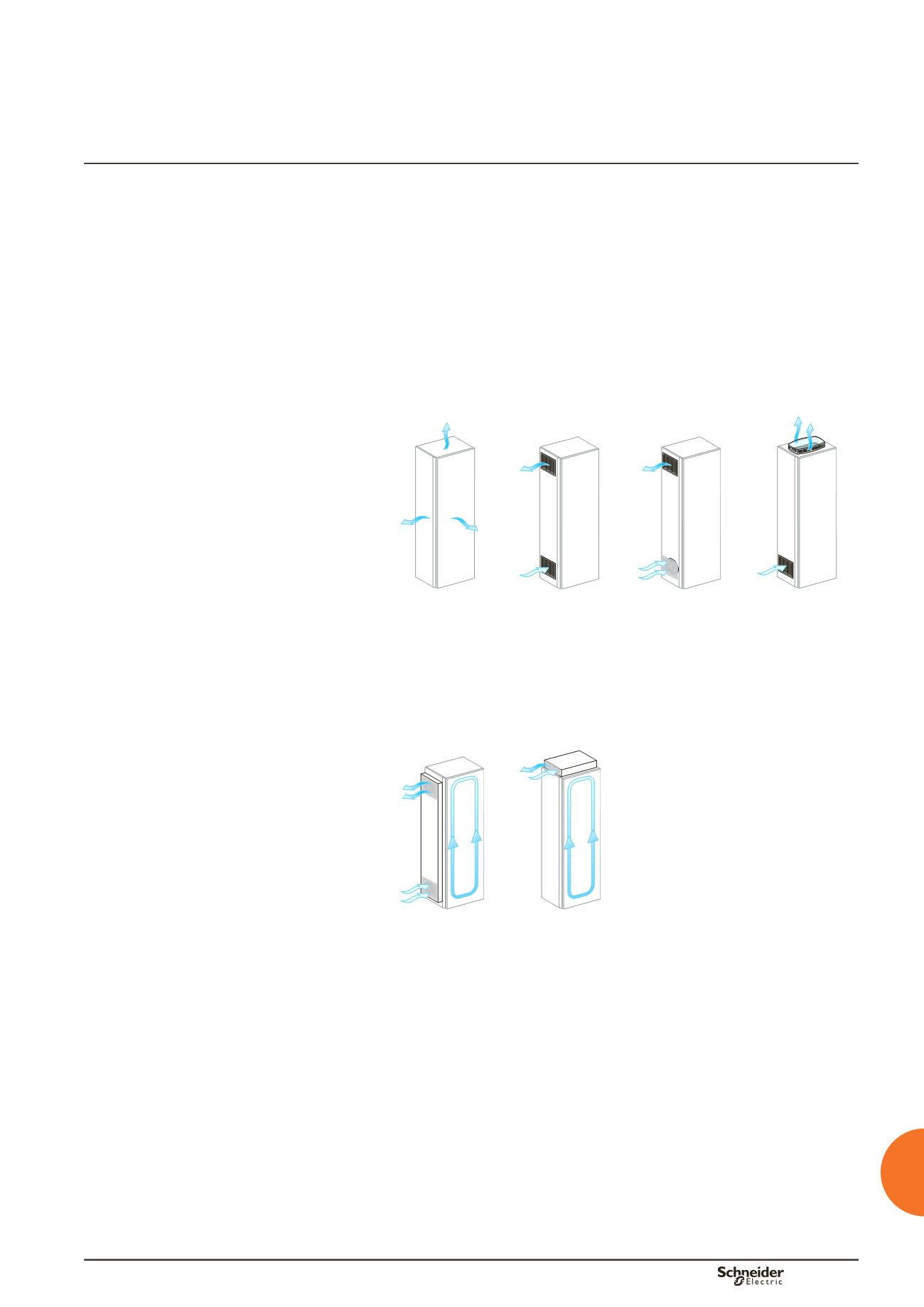

D-77
Additional information
Thermal characteristics of
switchboards
A switchboard is designed for operation under normal ambient conditions.
Most devices do not operation correctly outside a temperature range of -10 and
+70 °C.
It is therefore important to maintain the switchboard internal temperature within this
temperature range by:
bb
correctly sizing the switchboard during design
bb
correcting the temperature using suitable means.
Management of the internal
temperature
Cooling
There are a number of way to dissipate heat from the switchboard.
The drawings below present the various means.
Convection
Forced-air ventilation
Dd381484.eps
Dd381483.eps
Dd381482.eps
Dd381481.eps
IP > 31
IP
y
31
IP
y
54
IP
y
31
Ensured naturally in Prisma P
enclosures.
Using fans, it significantly increases the
thermal capacity of an enclosure.
Forced-air
ventilation with
air-air exchanger
Forced
convection and
cooling
Dd381920.eps
Dd381921.eps
IP > 31
IP > 31
On special request.
For these extreme cases, many installers prefer to set up the switchboards with
other electrotechnical and electronic devices in air-conditioned electrical rooms.
Heating
The means employed to raise the internal temperature in a switchboard is a
resistor-based heater, used to:
bb
avoid condensation by limiting variations in temperature
bb
ensure that the switchboard does not freeze.
Thermal management
of switchboards
General


















